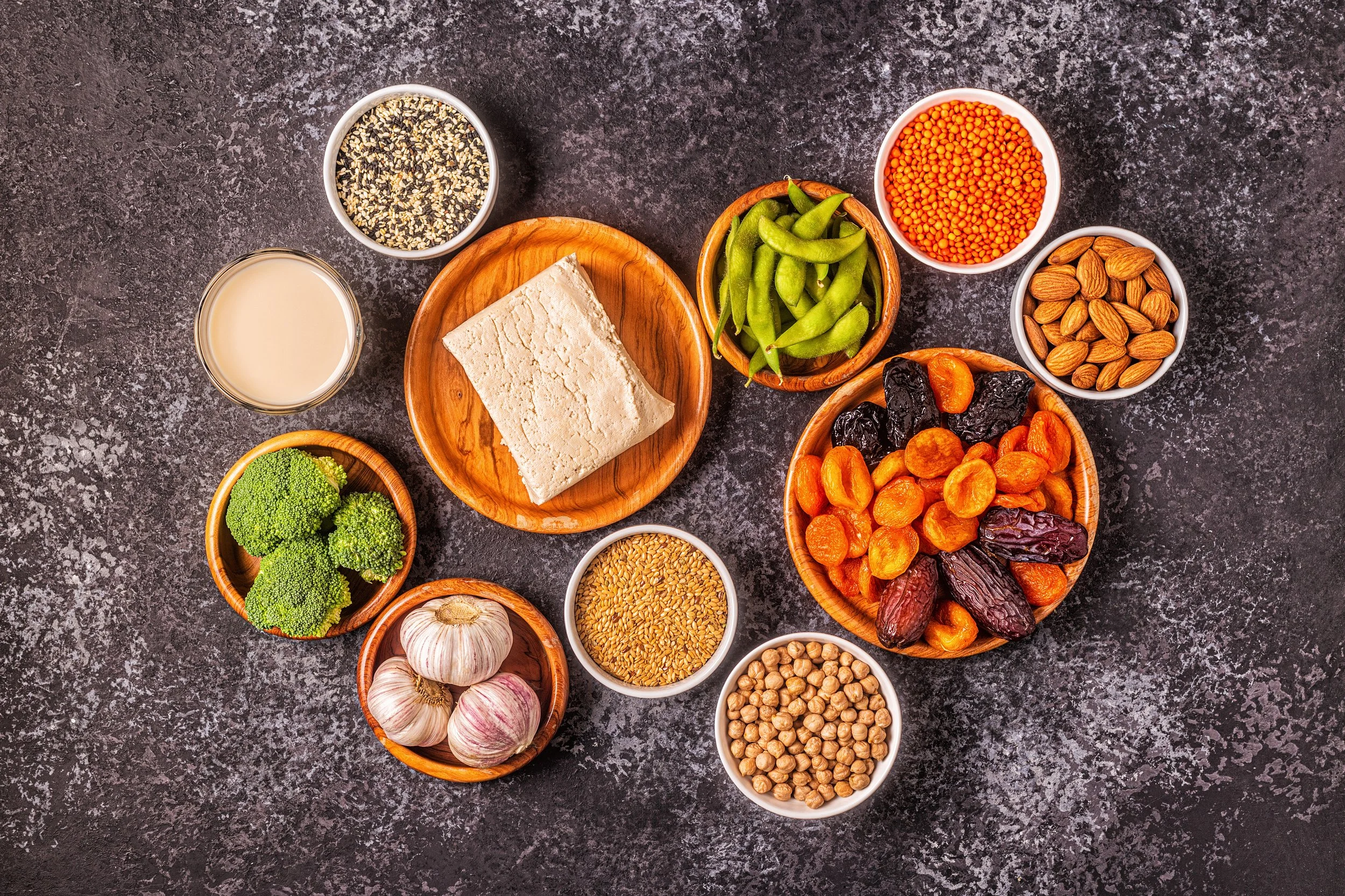Fueling For Life
The second half…
Transitions.
It’s the name of our blog for a reason. Women’s lives are marked by transitions, many of which are directly tied to our very nature as female humans.
Some of these transitions - pregnancy, childbirth, and postpartum - happen only to some women.
Others - menarche and menopause - are part of a woman’s life experience regardless of whether or not she ever gives birth.
As The Holding Space continues to grow into a community resource for all women, we’ll keep conversations going about all the transitions in women’s lives.
In my work as a Registered Dietitian (RD), I look at each of these transitions through the lens of nutrition. The food we eat affects every aspect of our health, and women in perimenopause and beyond have nutritional needs that differ in important ways from the needs of women who haven’t navigated that transition yet.
During the reproductive years, the continuous cycling of estrogen and progesterone over the course of each menstrual cycle promotes insulin sensitivity, protein metabolism, and bone mineralization. This means that blood sugar stays stable, muscle is built, and maximum bone density is achieved (up until around age 30).
However, as estrogen and progesterone levels become more irregular in the 5-ish years of perimenopause, the ever-decreasing production of estrogen eventually means that our carbohydrate tolerance goes down (slightly), and our protein needs go up. We’ll take a deeper look at each of these changes in turn.
Josette Curtis, MS RD, owner of Femina Fortis Nutrition and board member of The Holding Space Birth & Wellness Cooperative.
Carbohydrates are the food component that most directly affect blood sugar (in conjunction with the hormone insulin, which moves sugar out of the blood and into cells following a meal). This is important because consistently high levels of sugar hanging out in our blood can lead to multiple undesirable health consequences - hardening of the arteries, systemic inflammation, even liver disease. With decreased circulating estrogen, the receptivity of cells to insulin goes down; this means that if carbohydrate intake stays at pre-menopause levels, the woman is at risk of elevated blood sugar.
This does not mean a woman needs to go on a drastic low-carb diet once she’s in perimenopause! However, it can mean she’ll probably feel better consuming fewer sugary carbohydrates (like pastries, cookies, soda, etc) and shifting to whole-foods carbohydrate sources that are higher in fiber (because fiber-rich foods don’t impact blood sugar as do foods that are low in fiber).
Another important nutritional change that accompanies the menopause transition is that our bodies become less sensitive to the protein we consume. Protein is absolutely vital to preserving muscle mass (which also naturally declines in menopause, especially if the woman does not regularly strength train). But the amount of protein a premenopausal woman could consume and preserve her muscle mass is not sufficient to achieve the same result in a perimenopausal woman. The bottom line here is to embrace proteins! Lean protein - turkey, beef, chicken, seafood, pork, dairy, eggs - all have a place in your daily rotation. For women who prefer not to consume animal products, soy products (such as tofu and tempeh), quinoa, and pulses (beans & lentils) are also good sources of protein that can support muscle retention throughout this transition and beyond.
Perhaps the most well-known change a woman’s body undergoes during menopause is a progressive loss of bone density (you can blame decreasing estrogen levels for that, too!). Left unchecked, this loss of bone can develop into osteoporosis and leaves women susceptible to broken bones from relatively minor injuries that wouldn’t have been concerning during the reproductive years. This can be a major quality of life issue! Several nutrients are critical to preserving bone density - these include calcium, vitamin D, vitamin K (these 3 work together to maintain bone health), and protein. In fact, protein (and strength training) complement each other beautifully. This is because the main driver of bone density is exerting force on the bone. Requiring our muscles to act - via weight-bearing exercise and strength training - exerts force on the bones and sends a signal to the body that says, “Hey, we’re using these muscles and bones every day to work hard - let’s make sure we direct nutrients to the muscles and bones to keep them strong.” Remember, protein is what keeps our muscle mass high, which increases the force those muscles can exert on the bones, which in turn encourages bone density to be preserved. And, that bone density can’t be preserved (from a nutritional perspective) without adequate calcium, vitamin D, and vitamin K.
There’s a lot more to say about nutrition for women at all different stages of our lifespan - and through all of our transitions - but I’ll end here for now. Until next time, I’d love to know…what questions do you have? What other topics would you like to learn about? My passion is to teach every woman how to nourish herself through all of life’s transitions, so let me hear from you!
In health,
Josette
josette@theholdingspacebwc.com



